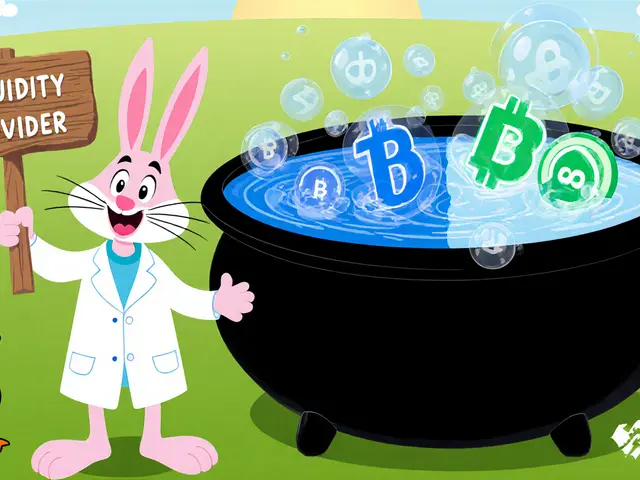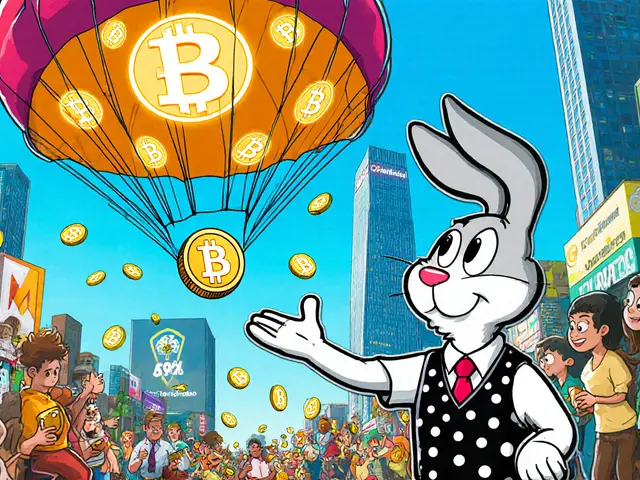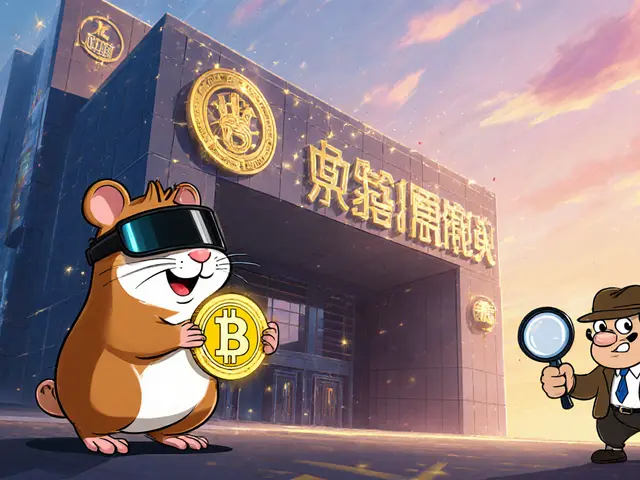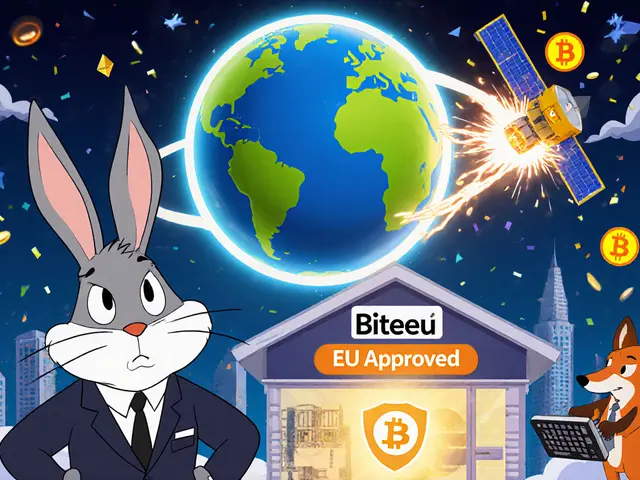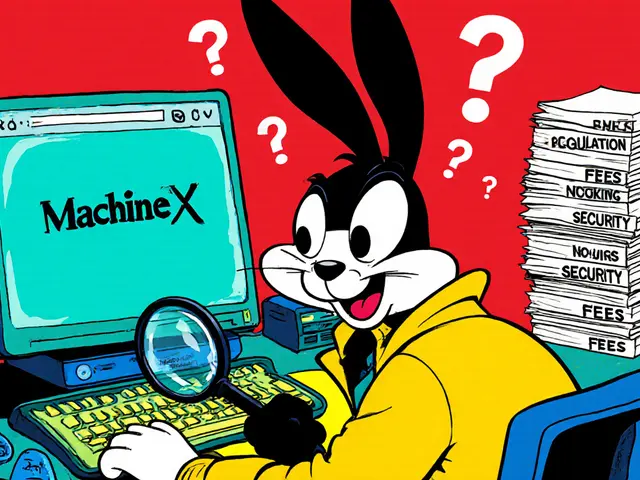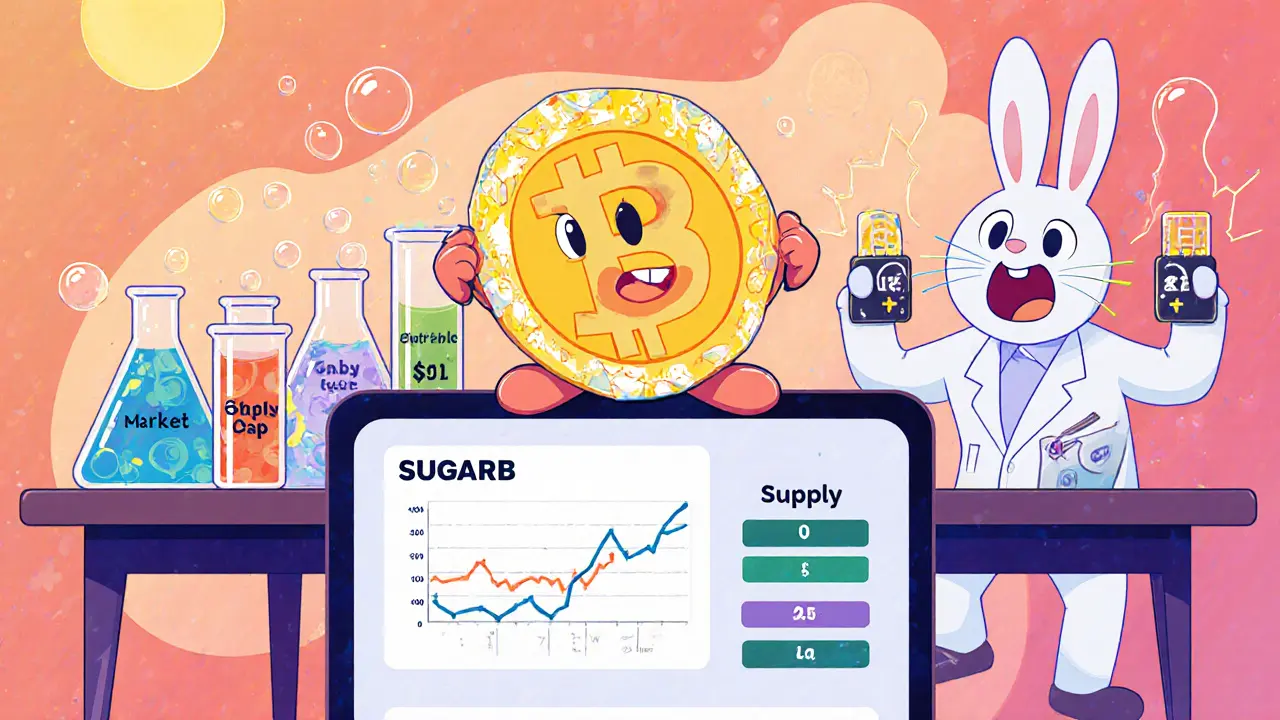
SugarBlock (SUGARB) Token Calculator
Current Token Metrics
Investment Calculator
With $, you can buy SUGARB tokens.
At a % return, your investment could grow to .
Current value of your holdings:
Token Supply Progress
Out of 198.7 million maximum supply, 153.4 million are currently in circulation.
This leaves approximately 45.3 million tokens unallocated or locked in contracts.
Risk Assessment
SUGARB is highly speculative with significant price volatility. The token has dropped 99.99% from its peak of $2.91. Liquidity is extremely low, making it difficult to sell quickly without significant loss.
Only invest what you can afford to lose entirely. Consider this as a high-risk, speculative play rather than a stable investment.
When you hear the term SugarBlock (SUGARB) is a cryptocurrency token designed to power a decentralized, on‑demand video‑streaming network. Think of it as a blockchain‑based CDN that lets creators broadcast live video without a middle‑man. The project grew out of a 2021 token sale called an Initial DEX Offering (IDO) a fundraising event where tokens are sold directly on a decentralized exchange, raising just over $250,000 in private and public rounds.
Quick Facts
- Launch: November2021 (originally as SugarBounce)
- Current price (Oct2025): ≈ $0.00039 per SUGARB
- Maximum supply: 198.7million tokens
- Main use‑case: decentralized live video streaming via DePin Decentralized Physical Infrastructure Networks that provide real‑world services using blockchain
- Primary DEX: PancakeSwap (v2) a Binance Smart Chain based automated market maker
What Is SugarBlock?
The core idea behind SugarBlock is simple: replace traditional content‑delivery networks with a peer‑to‑peer mesh of nodes that store and forward video chunks. By tokenizing bandwidth and storage, the platform incentivizes anyone with spare upload capacity to become a node, earning SUGARB for every megabyte relayed. This model mirrors the broader Decentralized Physical Infrastructure Networks (DePin) ecosystem that aims to decentralize utilities like energy, telecom and cloud services that have historically been owned by a few giants.
In practice, a creator uploads a live stream to the SugarBlock protocol. The video is split into small encrypted packets, then broadcast across a global lattice of willing nodes. Viewers receive the stream by re‑assembling these packets, much like a BitTorrent download but in real time. Because the network is permission‑less, there’s no single point that can block or censor the feed - a selling point for journalists, activists, and indie creators frustrated with platform bans.
How Does the Decentralized Streaming Network Work?
Two technical layers make the magic happen. First, the protocol sits on top of the Binance Smart Chain (BSC), using its fast, low‑cost transaction model to record node contributions and settle rewards. Second, an AI‑driven scheduler (the "block" part of SugarBlock) matches upload bandwidth with viewer demand, optimizing latency and reducing duplicate packet transmission.
When a node contributes bandwidth, a smart contract logs the amount of data transferred. At the end of each epoch (roughly every 10minutes), the contract mints a proportional amount of SUGARB and distributes it to participating wallets. This reward loop creates a self‑sustaining economy: more viewers mean more data to transmit, which means higher payouts, which in turn attracts more node operators.
Because the network is open‑source, developers can fork or extend it to add features like edge‑caching, adaptive bitrate, or even VR streaming. The open nature also means the community can audit the code for security flaws, a safeguard that centralized CDNs rarely offer.
Token Economics and Supply
The SUGARB token acts as both utility and incentive token within the SugarBlock ecosystem follows a capped supply model: 198.7million tokens will ever exist. The circulating supply figures differ slightly across data providers - Coinbase lists about 153.4million, while CoinMarketCap reports roughly 198.7million. This discrepancy stems from the fact that a portion of tokens is locked in smart contracts for future rewards and governance.
Early investors received a massive upside when the token briefly peaked at $2.91 in November2021 - a 99.99% drop from that high to today’s sub‑penny price illustrates the volatility typical of 2021‑era launch tokens. Private‑sale backers paid $0.048 per token, while the public IDO price was $0.55. Those who held through the peak saw returns of over 7,000%, but anyone buying after the peak now faces a long‑term gamble.
Current market cap hovers around $60k according to Coinbase data, placing the token well outside the top5,000 cryptocurrencies. With roughly 5,100 holders, the community is small but still active in Discord and Telegram channels, where developers share node‑setup guides and streaming demos.
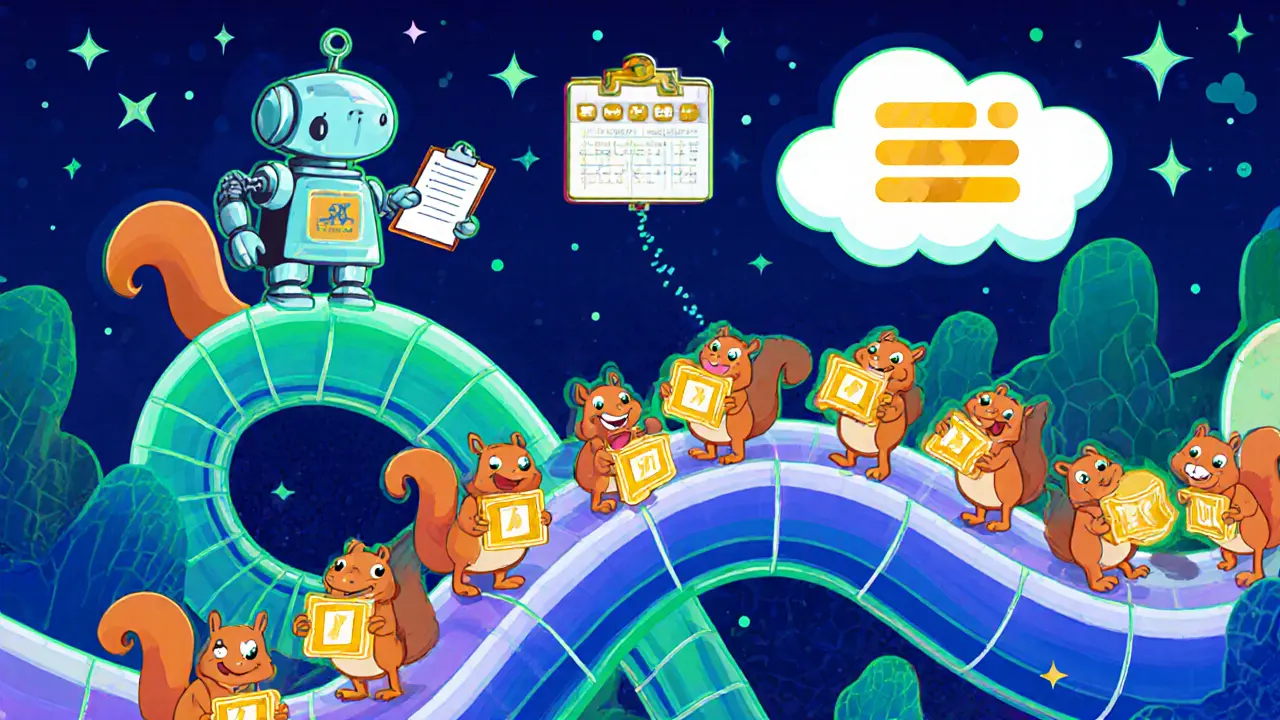
How to Buy & Trade SUGARB
Because SUGARB isn’t listed on major centralized exchanges, you’ll need a Web3 wallet and access to a decentralized exchange. The most popular route is:
- Install a compatible wallet - Binance Web3 Wallet a browser‑extension that connects to BSC‑based DEXes or Kriptomat Web3 Wallet offers fiat on‑ramps via SEPA, Visa, MasterCard and Apple/Google Pay.
- Transfer BNB or a stablecoin (BUSD, USDT) into the wallet.
- Navigate to PancakeSwap (v2) the go‑to DEX on Binance Smart Chain for swapping tokens and paste the SUGARB contract address (0x… placeholder) to add the token to the interface.
- Swap the amount you want, approve the transaction, and the SUGARB tokens appear in your wallet.
Liquidity is thin - the 24‑hour volume is under $35, meaning even modest trades can cause noticeable price swings. If you need to exit, consider using limit orders on PancakeSwap’s aggregator or moving the tokens to a bridge that supports other BSC‑compatible DEXes.
Market Performance & Risk Factors
Since the 2021 bull run, SUGARB has struggled to regain momentum. The price sits at roughly $0.00039, a 99.99% drop from its $2.91 high. Daily trading volume sits around $32, indicating almost no liquidity. Low volume translates to high slippage: a $1,000 purchase could push the price down by several cents.
Key risks include:
- Liquidity risk - tiny order books make quick exits difficult.
- Development risk - the roadmap has few public milestones, and code updates have been sporadic.
- Competitive risk - other DePin streaming projects like Livepeer and Theta have larger ecosystems and more active developers.
- Regulatory risk - decentralized video platforms may attract scrutiny if used for illicit content.
Investors should treat SUGARB as a high‑risk, speculative play. Only allocate capital you can afford to lose, and consider diversifying across several DePin tokens if you believe the sector has long‑term promise.
How SugarBlock Stacks Up Against Other DePin Streaming Tokens
| Feature | SugarBlock (SUGARB) | Livepeer (LPT) | Theta (THETA) |
|---|---|---|---|
| Primary blockchain | Binance Smart Chain | Ethereum (Layer‑2) | Own sidechain (Theta) |
| Token utility | Node bandwidth rewards | Transcoding & staking rewards | Video bandwidth & staking |
| Max supply | 198.7M | 1B | 1B |
| Current market cap (approx.) | $60K | $150M | $820M |
| Active nodes (latest data) | ~2,300 | ~12,000 | ~30,000 |
From the table you can see SugarBlock is a much smaller player. Its advantage is the ultra‑low transaction fees on BSC, which can make micro‑payments for bandwidth feasible. However, larger networks enjoy broader adoption, more developer tools, and deeper liquidity pools.
Frequently Asked Questions
What problem does SugarBlock aim to solve?
It tries to replace centralized content‑delivery networks with a peer‑to‑peer, blockchain‑backed streaming layer that reduces costs, avoids censorship, and gives creators a direct revenue stream.
How are node operators rewarded?
Every time a node relays video data, the protocol records the bandwidth in a smart contract. At the end of each epoch, the contract mints SUGARB tokens proportional to the contributed data and sends them to the node’s wallet.
Is SugarBlock safe to invest in?
The token is highly speculative. Low liquidity, a small developer community, and a 99.99% price drop from its peak make it risky. Only invest money you can lose.
Can I watch streams without owning SUGARB?
Yes. Viewing is free; the token is required only for node operators and for content creators who want to pay for bandwidth.
Where can I find the latest project updates?
The official Discord, Telegram groups, and the GitHub repository (sugarblock‑ai) are the primary sources for road‑map announcements and code releases.
Next Steps for Curious Users
If you’re a developer, start by cloning the open‑source repository and testing a node on a spare home server. The documentation walks you through BSC testnet deployment, and you’ll earn test tokens that simulate real rewards.
If you’re an investor, create a Binance Web3 Wallet, buy a small amount of BNB, and try a $5‑$10 swap on PancakeSwap. Track the price for a week; note the slippage and the speed of transaction confirmations.
Finally, keep an eye on the broader DePin trend. New legislation around decentralized services could either open doors for projects like SugarBlock or impose compliance hurdles. Staying informed will help you decide whether the token is a fleeting meme or a building block of the next internet.

